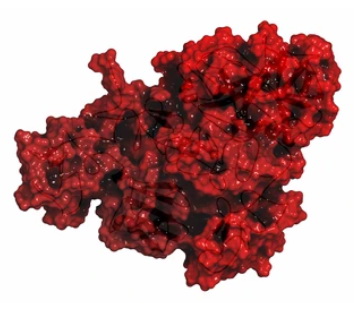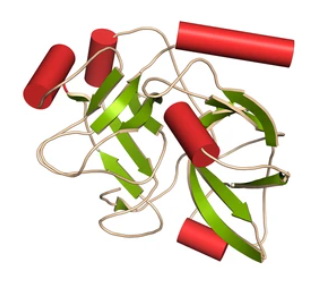Plasmin/Plasminogen and Kallikrein/Kinin Systems
About Plasmin/Plasminogen and Kallikrein/Kinin Systems
The plasmin/plasminogen system and the kallikrein/kinin system are two interconnected proteolytic cascades that play important roles in various physiological and pathological processes in the body.
1. Plasmin/Plasminogen System:
The plasmin/plasminogen system is involved in fibrinolysis, the process of breaking down blood clots. Plasminogen is an inactive zymogen (precursor) that is synthesized and secreted by the liver. When a blood clot forms, plasminogen is converted into its active form, plasmin, by plasminogen activators.
Plasmin is a proteolytic enzyme that degrades fibrin, the main component of blood clots, into smaller fragments, thereby dissolving the clot. The activation of plasminogen can occur through two main pathways:
- Tissue Plasminogen Activator (tPA) pathway: tPA is a serine protease that is released by endothelial cells. It binds to fibrin within the blood clot and catalyzes the conversion of plasminogen to plasmin, leading to localized clot dissolution.
- Urokinase Plasminogen Activator (uPA) pathway: uPA is a serine protease that is primarily produced by cells in tissues. It binds to uPA receptors on cell surfaces and converts plasminogen to plasmin, promoting fibrinolysis.
The plasmin/plasminogen system is crucial for maintaining the balance between clot formation and clot dissolution in the body. Dysregulation of this system can lead to excessive clot formation (thrombosis) or impaired clot dissolution (hypofibrinolysis).

2. Kallikrein/Kinin System:
The kallikrein/kinin system is a complex cascade involved in the regulation of blood pressure, inflammation, and pain perception. It revolves around two key proteins: kallikrein and kininogens.
- Kallikreins: Kallikreins are a family of serine proteases that can cleave kininogens, releasing bioactive peptides called kinins. One of the most well-known kallikreins is tissue kallikrein, which is produced in various tissues, including the salivary glands and kidneys.
- Kininogens: Kininogens are large plasma proteins that circulate in the blood. They can be cleaved by kallikreins to generate kinins, most notably bradykinin. Bradykinin is a potent vasodilator that relaxes blood vessels, leading to a decrease in blood pressure. It also promotes inflammation by increasing vascular permeability and stimulating the release of other inflammatory mediators.
The kallikrein/kinin system is tightly regulated to maintain physiological balance. The effects of kinins are counterbalanced by various mechanisms, including their degradation by enzymes such as angiotensin-converting enzyme (ACE) and their binding to specific receptors, such as B1 and B2 receptors.

Both the plasmin/plasminogen system and the kallikrein/kinin system have important physiological functions, but their dysregulation can contribute to various pathological conditions. For example, abnormalities in the plasmin/plasminogen system can lead to thrombotic disorders or bleeding disorders, while dysregulation of the kallikrein/kinin system may contribute to hypertension, inflammation, and pain-related conditions.
Understanding the roles of these systems provides insights into the complex mechanisms underlying processes such as clot dissolution, blood pressure regulation, and inflammatory responses in the body.
Physiological Functions of Plasmin/Plasminogen and Kallikrein/Kinin Systems
The plasmin/plasminogen system and the kallikrein/kinin system serve several important physiological functions in the body. Let's explore the specific roles of each system:
1. Plasmin/Plasminogen System:
- Fibrinolysis: The primary function of the plasmin/plasminogen system is the breakdown of blood clots through fibrinolysis. Plasmin, the active form of plasminogen, cleaves fibrin, the protein meshwork that forms blood clots, into smaller fragments, resulting in clot dissolution. This process is crucial for maintaining blood vessel patency and preventing excessive clot formation.
- Wound Healing: The plasmin/plasminogen system plays a role in wound healing. During tissue repair, plasminogen is activated locally, leading to the degradation of fibrin deposits in the wound bed. This process helps remove the fibrin scaffold and facilitates cell migration and tissue regeneration.
- Extracellular Matrix Remodeling: Plasmin can degrade various components of the extracellular matrix (ECM), including fibronectin, laminin, and proteoglycans. This activity is important for tissue remodeling and turnover, such as in tissue development, organ morphogenesis, and tissue repair processes.
- Cell Migration and Invasion: Plasmin can promote cell migration and invasion by degrading ECM components and facilitating the remodeling of the cellular microenvironment. This function is particularly relevant in processes such as embryogenesis, immune cell trafficking, and cancer metastasis.
2. Kallikrein/Kinin System:
- Blood Pressure Regulation: The kallikrein/kinin system plays a role in the regulation of blood pressure. Kinins, particularly bradykinin, induce vasodilation by relaxing smooth muscles in blood vessel walls, leading to increased blood flow and reduced peripheral resistance. This vasodilatory effect helps regulate blood pressure levels.
- Inflammation and Immune Responses: Kinins, especially bradykinin, are potent inflammatory mediators. They increase vascular permeability, promoting the extravasation of immune cells to sites of injury or infection. Kinins also induce the release of other inflammatory mediators, such as cytokines and prostaglandins, contributing to the inflammatory response.
- Pain Perception: Kinins, specifically bradykinin, can stimulate pain receptors (nociceptors) and contribute to the sensation of pain. They sensitize nociceptors, lower their activation threshold, and enhance the perception of pain signals.
- Endothelial Function: Kinins have a range of effects on endothelial cells, which line the inner surface of blood vessels. They promote the release of nitric oxide (NO), a potent vasodilator, from endothelial cells, leading to further vasodilation and improved endothelial function.
It's important to note that both the plasmin/plasminogen system and the kallikrein/kinin system interact with and influence various other physiological processes in the body, including coagulation, inflammation, immune responses, and tissue homeostasis. The intricate interplay between these systems and their functions contributes to the overall maintenance of normal physiological processes and responses to injury or disease.
Available Resources for Plasmin/Plasminogen and Kallikrein/Kinin Systems
Creative BioMart provides a diverse array of specialized products and services to bolster investigations into plasmin/plasminogen and kallikrein/kinin systems. Our range encompasses recombinant proteins, cell and tissue lysates, pre-coupled protein beads, antibodies, and more, all dedicated to unveiling the fundamental mechanisms governing their operations.
Furthermore, we offer comprehensive resource support, including associated pathways, protein functions, interacting proteins, related research fields, relevant articles, and additional materials relevant to plasmin/plasminogen and kallikrein/kinin systems. This comprehensive support aims to enrich the understanding and exploration of the functions and regulatory mechanisms governing these pivotal molecules.
Uncover an abundance of resources linked to plasmin/plasminogen and kallikrein/kinin systems below:
If you require further assistance or tailored services, feel free to ontact us at your earliest convenience. We are committed to supplying top-tier research tools and services to aid your pursuit of successful scientific outcomes.


